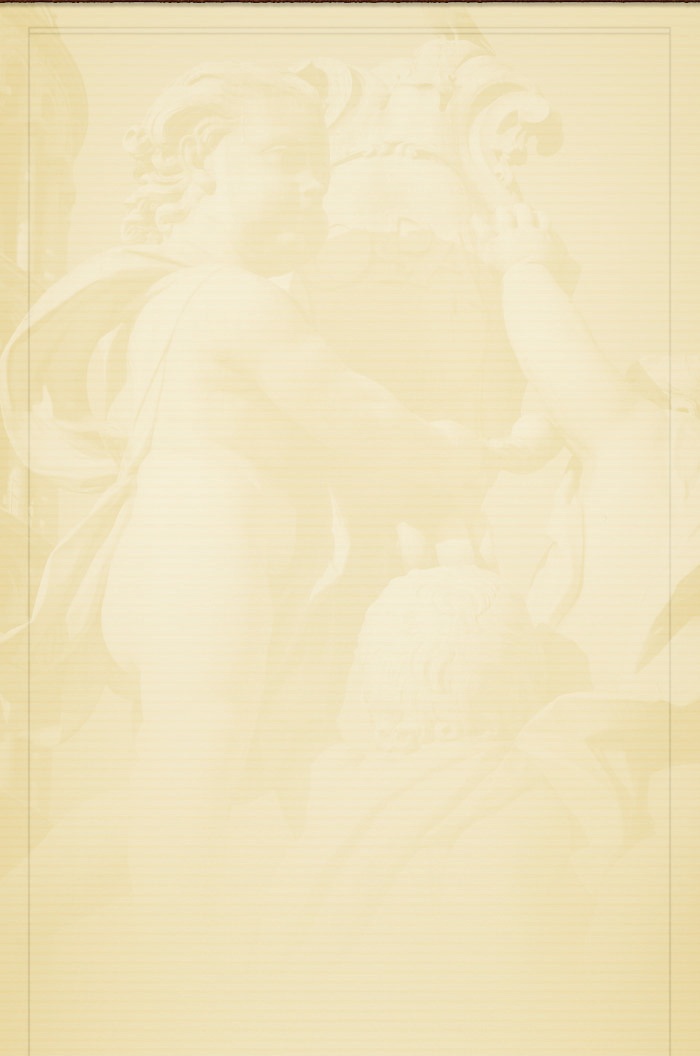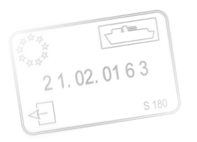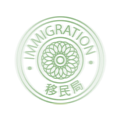When we left Lithuania, it was September 10. We had firm plans to move directly south into Romania, spend a week or so, then make tracks for Bulgaria, where we knew mail would be arriving shortly. We really detest “keep moving” plans, but had long known that if we wanted to spend the fall in Turkey we would end up having to do a “speed run” through some areas we really want to spend some quality time in. (You may remember our “best laid plans” from last year, whereby we would truck on into Turkey after visiting Bulgaria – waylaid by those damn broken wheels.)
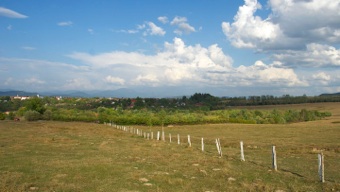
There are only two roads into Poland when you leave Lithuania. They both poke through a relatively narrow open corridor between Belarus and Kaliningrad (part of the Russian Federation); as a result, your roads south from the Baltics are full of trucks until they pull off to head over to Warsaw or into Belarus or, further down, Ukraine. We had lots of company.
Poland, Slovakia and Hungary are all on Central European Time, an hour behind the Eastern European Time we’d been on since Finland -- and would re-join when we reached Romania. But we ignored all that; we wouldn’t be in these countries long enough for it to matter. They flitted by – although we did have time for a few adventures along the way. We kept to the eastern edge of Poland, it being the most direct route. This took us down a major, major truck route, and close to the eastern border all the way.

After awhile many of the trucks veered off onto different routes and the road became much quieter and more pleasant. The scenery got a bit nicer, with apple orchards in some areas, and we bypassed several sights we knew we would come back to visit another year. Eventually we dropped down onto the plains and then crossed into Slovakia.
Slovakia was going to be a bit of a mystery to us, as we’d not been able to find out much about the country ahead of time. Relatively few travelers’ journals were available, so we didn’t have much overnight parking information. But I’d come across an English couple’s site that discussed a spot where they’d been able to take on water. This was terrific, as throughout Poland water had been unavailable at service stations, and we were quite low.
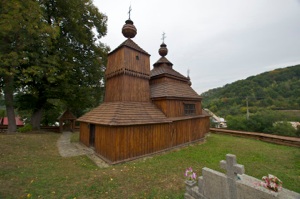
Slovakia is going to be lots of fun to come back to; and by then I’ll have done a better job gathering information. We can tell you that we saw tons of Skodas there, as they are made locally, and that suddenly the people we saw along the roads looked more “Eastern.” Oh, and we did find the recommended spot for filling our tanks with fresh water. Hurrah!
We drove along a road in pretty lousy condition, but through pleasant countryside with rolling hills and fields that had been harvested. There were plenty of trucks but they weren’t overbearing, it wasn’t smoky and there was a nice breeze, and we drifted on… into Hungary.Now Hungary I knew more about. We specifically were heading for a dinky little area in the far eastern corner of the country. It was near the Tokaj wine grape region, but I was looking for plum jam. This little corner of the world was well known for this special item, and I wanted some! Well, not surprisingly, it wasn’t as easy as it sounds.
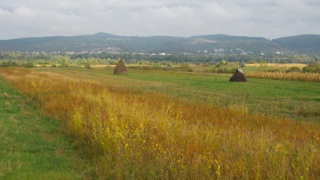
We went through a swampy area, reclaimed in modern times but still filled with ancient houses on stilts and trees containing huge clumps of mistletoe, and crossed over almost into Ukraine. Entering Tarpa, we went in search of jam.
Not speaking any of the language and not seeing any roadside stands selling the stuff, all I could think to do was to find the women who make it, so I started in a small grocery. I walked in, found a half dozen ladies doing their shopping, and started asking if anyone spoke English; of course not. So I began looking for jars on the shelves, thinking this would give me something to point at. Well, to make a long story short, folks figured out what I was looking for and one lady took me in hand. She rode her bike and we followed behind, through the streets of the village, as she knocked on a few doors and got no answer but finally coming to what she said was her last hope. And the lady was at home.
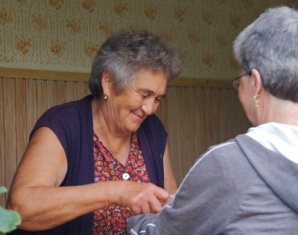
Having gone through all this, and having gotten the entire village all stirred up (pardon the pun), I couldn’t refuse to buy some of this glop. So the lady weighed out a half-kilo (!!) for me, I gave her 2,000 Hungarian what-evers (about $8.50), we all smiled and giggled and hugged, feeling good about what we’d accomplished, and then Rick and I went on our way. The whole adventure was a hoot, and the town will be talking about us for months.
By the way, the “glop” was pretty useless all by itself, but I mixed some with a jar of honey I’d bought from the bee man in Lithuania, and it’s delicious.
On beyond Tarpa and the plum jam, we soon entered Romania, a country we’d been looking forward to visiting in depth. We had already realized that a long visit would necessarily be put off until next year, but had picked an area in the far northern part of the country in which to spend a week or so; often looking right across the border at Ukraine, pondering a possible future visit.
Romania’s northern boundary with Ukraine is very rural and old and full of two really cool kinds of things: even ancient-er wooden churches than the ones we’d seen in Slovakia, and the famous painted monasteries of Moldavia. We spent our week wandering among and seeing as many as we could of both. They were wonderful.
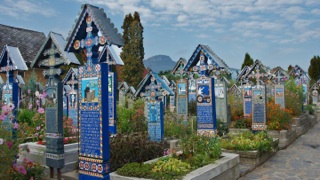

On the western edge of all this religiosity we were heading for the cemetery at Săpânţa, known as the Merry Cemetery because of the charming, upbeat, colorful wooden grave markers. They were quite marvelous and we, along with many other folks, thoroughly enjoyed them. Death doesn’t have to be a sadness; these grave markers have all been painted by, originally, this one fellow who’s idea it was to celebrate the lives of those who had died with stories of their lives and upbeat likenesses of them along with multi colored decorative elements. More recently another person has taken over from the now elderly originator of the idea. It’s a very special place. At Săpânţa we also saw the first of the wooden churches of the area. It is currently being restored, and is covered with scaffolding, but it will be stunning when they finish.
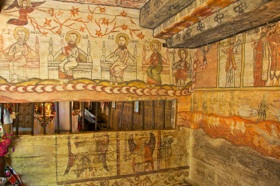

We thoroughly enjoyed being in this valley, and realized the road and the countryside were the reason for being here, the sights to see just the excuse.
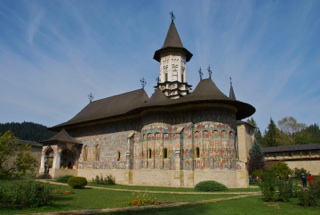
Our wanderings in northern Romania were on generally very bad roads, tiny winding paths into nowhere at the ends of small valleys in rural forested areas; it was great. We often shared the road with cows and sheep and goats and wagons bringing lumber down off the hillsides. Reluctantly, we finally decided it was time to rejoin civilization, and began looking for a more major road, a town that had groceries, a chance to pick up some wifi. But it had been a great experience, and we really think you’d enjoy this area. Catch it soon, before it becomes too touristed. We came across tour busses at most of the monasteries, but were able to work around them, waiting for the groups to move on as needed.
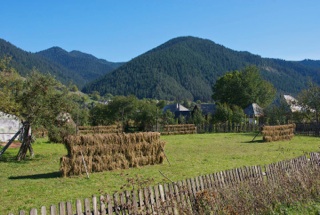
Leaving the mountains (and then foothills) behind for good, we dropped down into the wide Danube River Basin, around Brasov and Bucharest and finally to the Danube River itself, where we crossed over into Bulgaria on a very old and rusty over-trafficked bridge and headed straight for our familiar campground outside Veliko Tarnovo. We stayed there for most of two weeks while we gathered in mail and various other packages, rested a bit, did a ton of projects, including a bath and shine for La Tortuga, her first since April, and prepared for a late fall in Turkey. Turkey! Finally Turkey!
While at Camping Veliko Tarnovo, we met some pretty cool folks, first a British couple who had relocated here and had bought a home. A very nice used bookstore in VT is providing some income for them, along with an active house remodeling business. We’ve also met another couple (either more or less exotic depending upon where you call home!) – Americans who have been living and working abroad much of their adult lives and who are currently “90-day nomads” as they live most of the time in Europe while dodging the requirements of the Schengen agreement. The six of us spent a weekend together, exchanging thoughts and books and information on all sorts of subjects. It was great and constantly stimulating, and we had a terrific time.
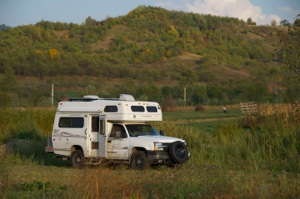
So we leave you to enjoy the changing seasons wherever you are. We had a love/hate relationship with the hot weather on the plains near VT, where the moon was full and hanging heavy in the evening sky at the close of the warm days. Since then there’s already been a change in the weather and it’s much cooler, particularly here on the coast, where we sit just north of the Turkish border. Life is good (which seems to be our signature sign-off these days).
Rick and Kathy, heading off to explore Turkish Delights
PS: This is a pretty short message, with room for fewer photos. Be sure to go to the photo page to see all the pictures.
Click to see more photos from Romania
